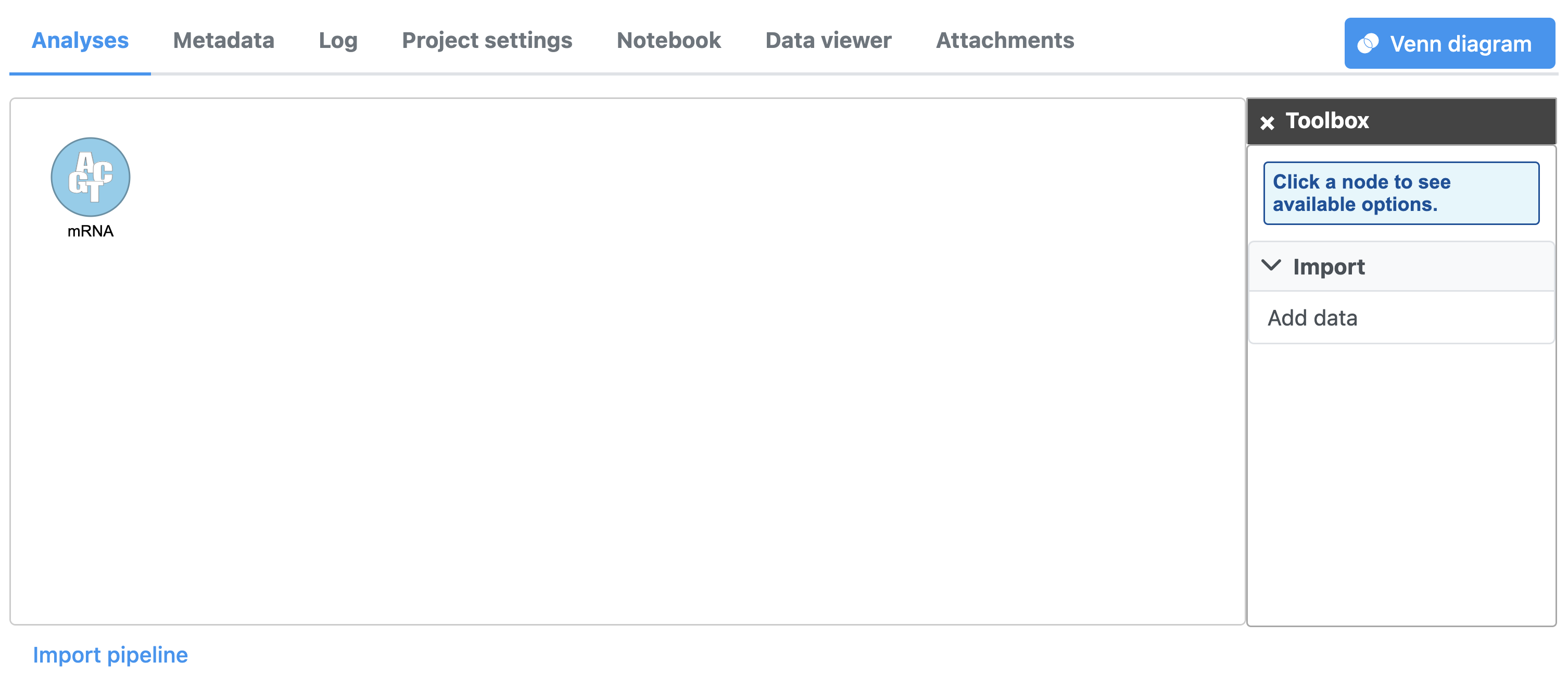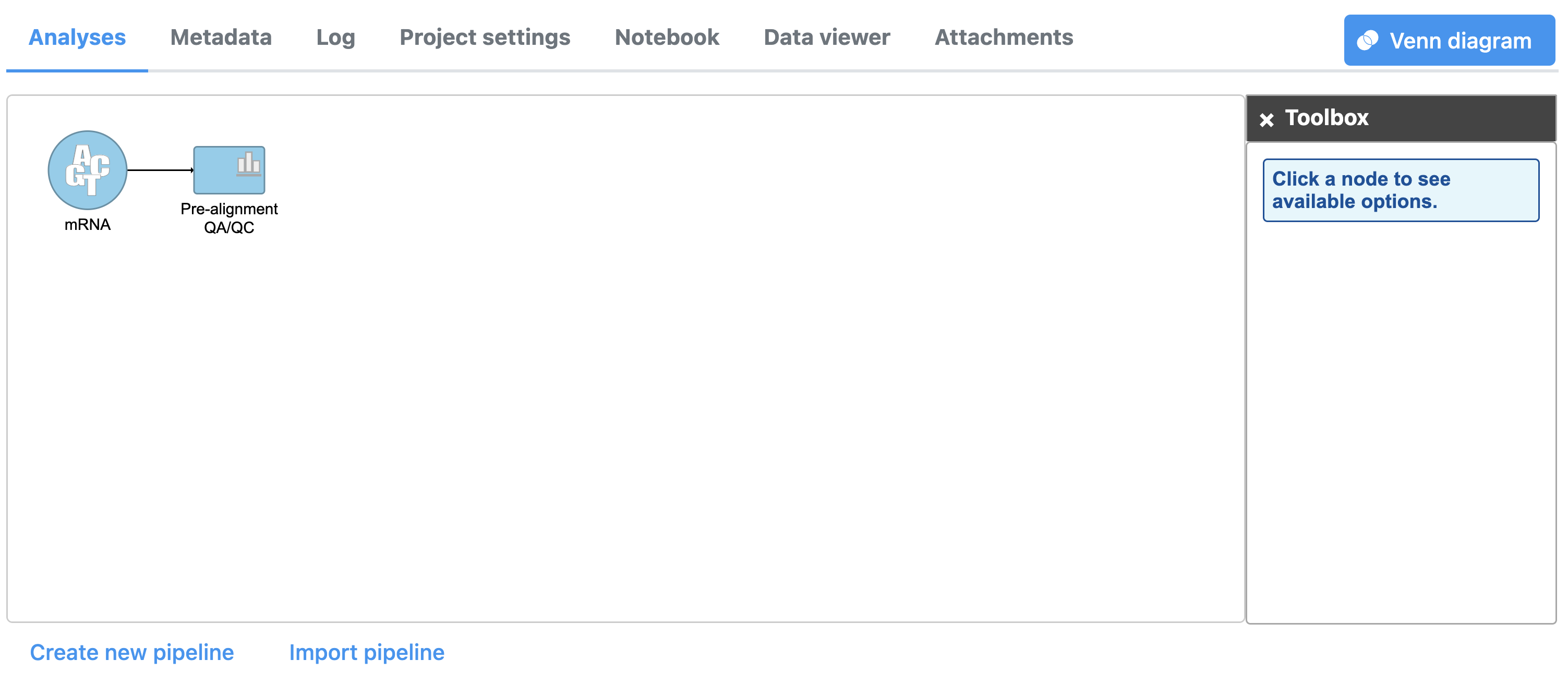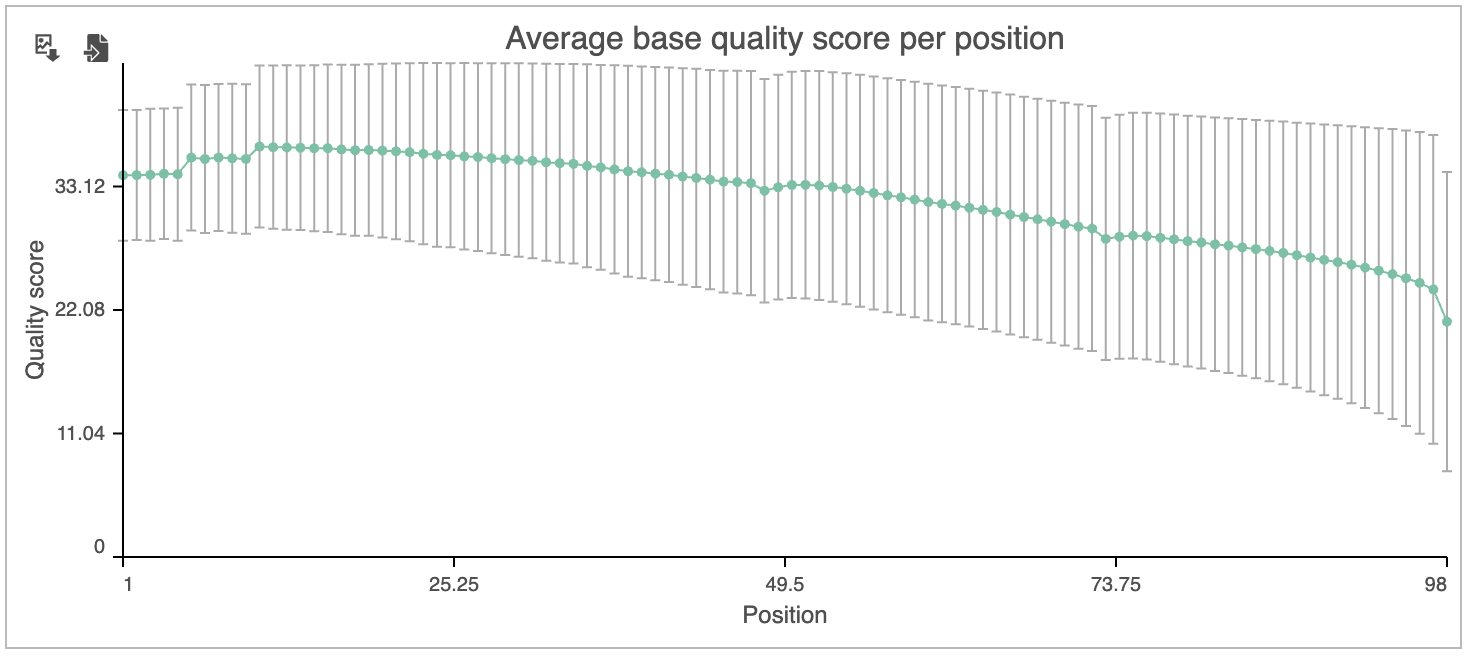With attributes added, we can begin building our pipeline.
- Click the Analyses tab
In the Analysis tab, data are represented as circles, termed data nodes. One data node, mRNA, should be visible in the Analysis tab (Figure 1).
- Click the mRNA node
Clicking a data node brings up the context-sensitive task menu with tasks that can be performed on the data node (Figure 2).
Pre-alignment QA/QC assesses the quality of the unaligned reads and will help us determine whether trimming or filtering is necessary.
- Click Pre-alignment QA/QC in the QA/QC section of the task menu
- Click Finish to run the task with default settings
Running a task creates a task node, e.g. the blue rectangle labeled Pre-alignment QA/QC (Figure 3), which contains details on the task and a report.. While tasks have been queued or are in progress they have a lighter color. Any output nodes that the task will generate are also displayed in a lighter color until the task completes. Once the task begins running, a progress bar is displayed on the task node.
- Click the Pre-alignment QA/QC node
The context-sensitive task menu (Figure 4) shows the option to view the Task report and the Task details. You can also access a task report by double-clicking on a task node.
- Click Task report
Pre-aligment QA/QC provides information about the sequencing quality of unaligned reads (Figure 5). Both project level summaries and sample-level summaries are provided.
- Click sample SSR592573 in the data table of the report to open its sample-level report
The Average base quality score per position graph in the upper right-hand panel (Figure 6) gives the average Phred score for each position in the reads.
Phred Quality Score | Probability of incorrect base call | Base call accuracy |
|---|---|---|
20 | 1 in 100 | 99% |
30 | 1 in 1000 | 99.9% |
40 | 1 in 10,000 | 99.99% |
50 | 1 in 100,000 | 99.999% |
By convention, a score above 20 is considered adequate. As you can see, the standard error bars in the graph show that some reads have quality scores below 20 for some of their base pair calls near the 3' end.
Based on the results of Pre-alignment QA/QC, while most of the reads are high quality, we will need to perform read trimming and filtering. For more information about the information included in the task report, please see the Pre-alignment QA/QC user guide.
- Click RNA-Seq 5-AZA to return to the Analyses tab
Additional Assistance
If you need additional assistance, please visit our support page to submit a help ticket or find phone numbers for regional support.


| Your Rating: |
    
|
Results: |
    
|
32 | rates |





